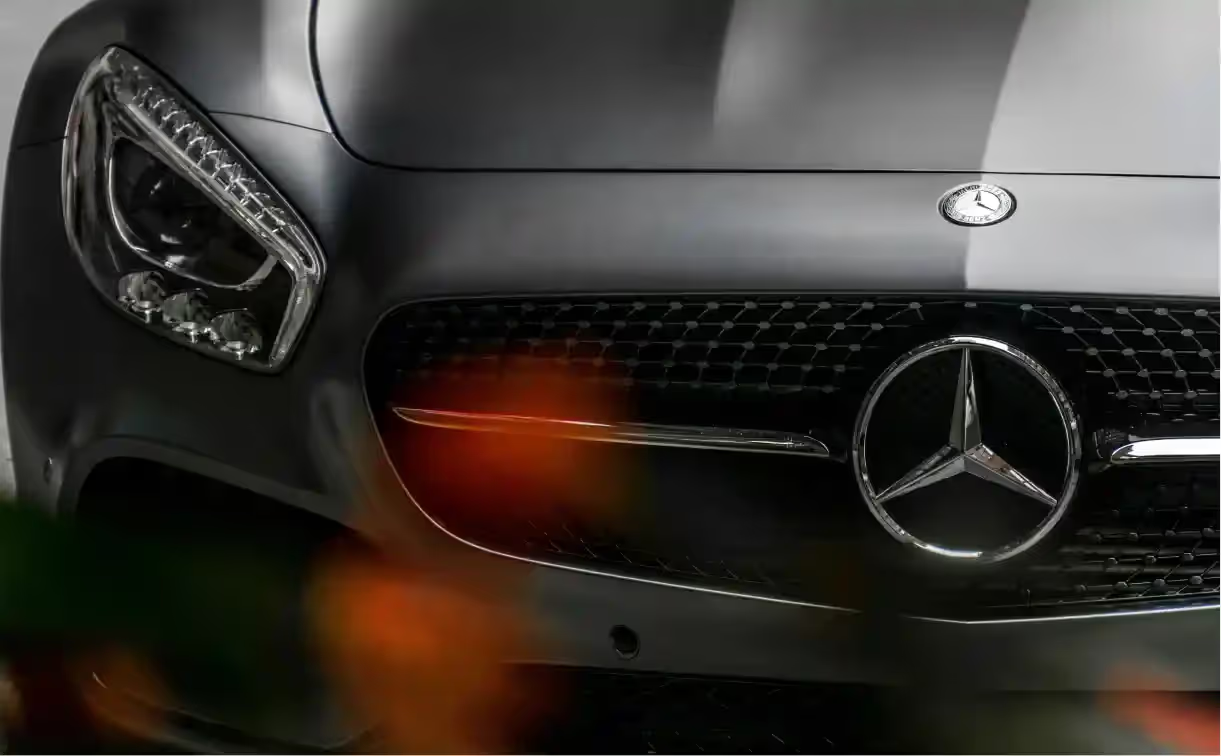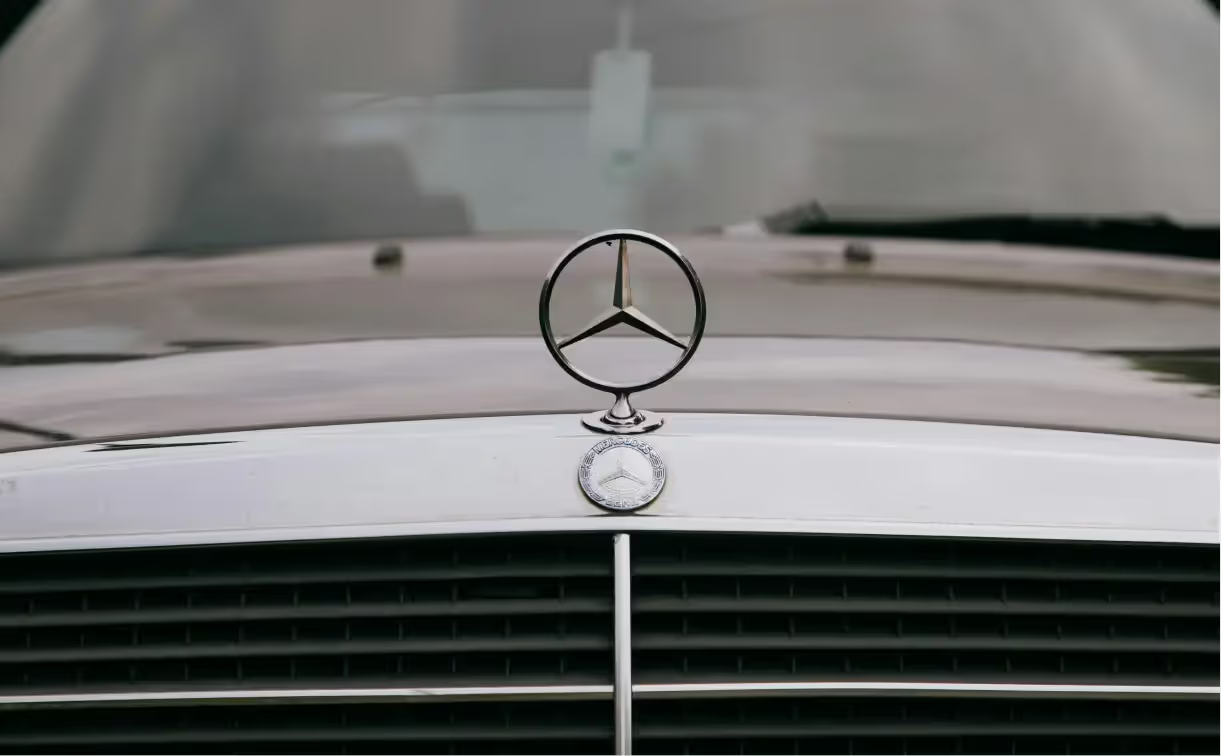This Mercedes EV Actually Made Me Forget It Was Electric
This Mercedes EV Actually Made Me Forget It Was Electric
Why I Almost Said No to This Gig
Sarah from the magazine called me last Tuesday. "We need you to test the new Mercedes CLAelectric for two weeks. Denmark and Sweden. Interested?"
I groaned. Not another electric car review. I'm getting tired of pretending every new EV is going to "change the automotive landscape forever" when most of them drive like refrigerators with wheels. But Denmark in May? Come on. Plus, it's Mercedes, not some startup that thinks they invented the car.
"Fine," I said. "But I'm not promising anything positive."
Big mistake. This thing actually got to me.
Look, I've been doing this job since 2006. I've driven everything from $200,000 supercars to $15,000 econoboxes. Most cars are forgettable. Some are terrible. A few are genuinely good. But cars that actually surprise you? Those are rare.
The CLA electric surprised me. Not because it's revolutionary or groundbreaking or any of that marketing bullshit. Because it's just... normal. Good normal. Like, "I forgot this thing runs on batteries" normal.
First Day: Lower Expectations, Meet Reality
Looking at It: Finally, No Sci-Fi Nonsense
When the delivery guy dropped it off at my hotel in Copenhagen, my first thought was "huh, it just looks like a Mercedes." Which is exactly what it should look like. No weird plastic cladding, no bizarre LED patterns, no "I'M ELECTRIC" design language screaming at you from every angle.
Park it next to any other Mercedes sedan and it fits right in. There's a light strip across the front where the grille used to be, but it's subtle. Tasteful, even. The whole car has this clean, purposeful look—aerodynamic without being weird about it.
Mercedes says the drag coefficient is 0.20, which is insanely slippery. You feel it on the highway too. At 80 mph, wind noise is basically nonexistent. The car just slips through air like it's not even there.
Even the details work. Those flush door handles seemed gimmicky until I realized how much they help with wind noise. The wheel designs clearly prioritize airflow, but they don't look like they belong on a science experiment.
Only thing that bugs me is that star pattern in the grille. From a distance it's fine, but up close it feels like someone couldn't resist adding one more design element. It's not terrible, just unnecessary.
Getting Inside: Screen Overload That Actually Works
Three screens across the dashboard. My heart sank. Here we go with the Tesla approach—throw displays at everything and call it innovation.
But Mercedes actually made it work. The screens talk to each other properly, the interface makes sense, and—thank God—there are still actual buttons for basic functions. You don't have to navigate through seventeen menus to turn up the heat.
Materials are what you'd expect for the money. Yeah, there are hard plastics in places, but Mercedes was smart about placement. Everything you touch regularly feels premium. The ambient lighting helps too, especially at night.
I tested both trim levels during my trip. The AMG Line has carbon fiber bits and sport seats that make you feel like you should be heading to a track day. The Luxury package swaps that for wood and leather that's more appropriate for business meetings. Both work for their intended purpose.
Day Three: The Mechanical Stuff Starts Making Sense
Power: Appropriate, Not Excessive
Mercedes could've stuffed ridiculous motors in here just to win internet arguments. Instead, they built powertrains that make sense. The base CLA250+ makes 268 horsepower from a single rear motor—not crazy numbers, but it feels right for what this car is.
There's also a dual-motor CLA350 with 349 horsepower and all-wheel drive. I spent time in both, and honestly? Preferred the base model. The single-motor car feels lighter, more nimble, more willing to play. The 350 is quicker in a straight line but heavier and more serious about everything.
Both motors are smooth as hell though. No electric whine, no weird noises. Just clean power delivery that feels completely natural. Mercedes clearly spent money on noise control, and it shows.
The Transmission: Smart Engineering
Here's where Mercedes really showed off. Most EVs use single-speed transmissions because they're cheap and simple. Mercedes built a two-speed automatic. First gear for acceleration, second for highway efficiency.
Shifts happen around 50 mph and they're so smooth you barely notice. But the benefits are huge—the motor stays in its sweet spot whether you're launching from a light or cruising at 75. It's sophisticated engineering that most companies wouldn't bother with.
This is what happens when you've been building transmissions for decades. A startup would call it unnecessary complexity. Mercedes calls it doing the job right.
Battery Management: Invisible and Smart
The 85-kWh battery sits in the floor, which you feel immediately in how stable the car is. But the real magic happens behind the scenes.
It's constantly monitoring every cell, predicting maintenance, even preheating when you navigate to chargers. During my trip, I noticed the car would start conditioning the battery fifteen minutes before reaching charging stations. By the time I plugged in, it was ready for maximum speed.
This is technology done right—helping you without making you think about it.
Week One: Charging Actually Works
Real Speed for Real People
Mercedes claims 320 kW peak charging, which sounds great until you realize most chargers can't deliver that. But here's what matters: during my Nordic road trip, I consistently added 180+ miles during coffee breaks. That's actually useful.
The charging curve is impressive too. Most EVs start fast but slow way down after 50%. The CLA maintains over 200 kW until 60%, turning a potential 35-minute stop into a 20-minute one. On long trips, that difference matters.
Network Compatibility: No Drama
All the confusion about Tesla Supercharger compatibility? Mercedes solved it. Smart charging protocols optimize power across different networks, plus all necessary adapters. I used Tesla Superchargers , Ionity stations , and random local networks without issues.
The port placement on the rear quarter panel works with both left and right-side chargers. LED indicators make it easy to check progress from across a parking lot.

Daily Driving: What Actually Matters
Chassis: Proper Engineering
The CLA rides on Mercedes' new MMA platform, designed for both electric and gas powertrains. You feel the maturity immediately—this doesn't feel converted or experimental.
Suspension tuning hits the sweet spot between comfort and control. It absorbs bumps without feeling disconnected. Adaptive dampers adjust constantly but seamlessly—you notice the results, not the technology.
Steering is classic Mercedes—light for parking, substantial for highways. The car feels more agile than its size suggests.
Regen Braking: Four Modes That Make Sense
Four regenerative braking modes, each serving different purposes. Auto adjusts based on traffic and terrain. Coast minimizes regen for highway efficiency. Standard provides moderate recovery. Max enables one-pedal city driving.
The system recovers up to 100 kW during hard braking, extending range significantly in traffic. But it all feels natural. The brake pedal acts like a brake pedal, not a computer interface.
Technology: Helpful, Not Annoying
Safety That Works
Safety tech that helps without taking over. Adaptive cruise flows with traffic naturally. Lane-keeping provides gentle corrections without fighting you.
The Pre-Safe system impressed me in Copenhagen traffic. Someone ran a red light right in front of me, and before I processed the danger, the system had tightened belts and adjusted seats. Happened so fast I barely noticed—exactly right.
Voice Control That Gets It
MBUXlearns your habits and makes useful suggestions. After a few days, it recommended my preferred routes and switched to my usual podcast automatically.
Voice control responds to natural speech. I could say "I'm cold" instead of navigating menus. Multiple languages, understands context. Technology that helps instead of impressing.
Competition Check
BMW i4: ThePerformance Option
BMW emphasizes dynamics over efficiency, showing in both character and consumption. Sportier in some ways but less refined. CLA's charging and transmission give practical advantages.
Tesla Model 3: Still the S tandard
Tesla sets benchmarks for performance and charging access. But CLA offers advantages in build quality and refinement. Silicon Valley versus German engineering—different approaches.
Hyundai Ioniq 6: The Value Pla y
Impressive efficiency at competitive pricing, but can't match CLA's premium feel. Great car, different market.
Real-World Numbers
Range You Can Count On
Mercedes estimates over 350 miles EPA range for the CLA250+. During testing, I averaged 4.0 miles per kWh, supporting those claims.
Highway at 70 mph: 3.8 miles per kWh. City driving: 4.2 miles per kWh thanks to regen. Real numbers with climate control and music—not lab conditions.
Environmental Responsibility
Carbon-neutral production at their German factory. Renewable energy, water recycling, recycled materials throughout. Battery recycling partnerships for end-of-life.
Availability and Pricing
U.S. deliveries start late 2025 in major cities. Mercedes plans 100,000 global production, 25,000 for North America.
Expected $55,000 pricing positions it against competitors while offering unique advantages—especially charging speed and powertrain sophistication.

Final Thoughts
Who Should Buy This
Makes sense for people wanting electric luxury without lifestyle changes. If you've been waiting for an EV that doesn't require new habits, this might be it. Long range, fast charging, traditional Mercedes quality for folks wanting electric benefits without compromises.
Perfect for urban/suburban drivers with occasional longer trips. Charging makes road trips realistic, efficiency keeps daily costs reasonable.
When to Skip It
Maximum acceleration priority? Look elsewhere. Need SUV space? Obviously not this. Budget priority? Cheaper options exist.
The CLA represents Mercedes doing what they do best—thoughtful, well-engineered luxury that happens to be electric. Not trying to revolutionize anything, just being excellent without compromising what makes cars enjoyable.
What Changed My Mind
After two weeks, I realized something weird happened. I stopped thinking about it being electric. It just became the car I was driving. Fast charging, long range, refined operation—it all just worked without drama or compromise.
That's exactly what electric cars needed to become. Not revolutionary, not groundbreaking, just really good cars that happen to run on batteries instead of gas.
I can't believe I'm admitting this, but I actually miss driving it. For someone who's been skeptical about EVs, that's saying everything.
